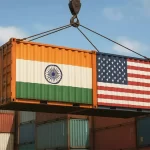Listen to the audio version of the blog here:
In the world of logistics it is mostly juggling goods between Container Freight Stations (CFS), Container Yards (CY), and warehouses. These facilities ensure that goods are stored, sorted, and moved with precision, minimising delays and maximising efficiency. To ensure a smooth supply chain, understanding about CFS, CY and warehouses is important. Along with that comes the need to consistently stay updated about new technologies involved to provide the best services.
Understanding the Role of CFS, CY, and Warehouses
Each of these facilities plays a unique role in logistics. A CFS acts as a hub where goods are consolidated or unconsolidated before customs clearance. It is crucial for handling Less than Container Load (LCL) shipments, ensuring cargo is properly sorted and processed.
Meanwhile, a CY functions as a storage facility for Full Container Load (FCL) shipments, providing temporary holding space before containers are moved to their final destinations.
Warehouses, on the other hand, are essential for long-term storage, inventory management, and order fulfilment. Their efficiency directly impacts delivery speed, cost control, and customer satisfaction.
Emerging Technologies Reshaping Operations
Technology is revolutionising the way CFS, CY, and warehouses function.
- Automation and Robotics: Companies are integrating warehouse robots, to reduce human error and increase efficiency. DHL has incorporated Locus Robotics’ autonomous mobile robots in its warehouses.
- Warehouse Management Systems (WMS): Advanced WMS software provides real-time inventory tracking, reducing errors and improving fulfilment speeds.
- IoT and Real-Time Tracking: Smart sensors and GPS tracking allow businesses to monitor container movements and warehouse stock in real time, minimising delays. In 2018, Maersk launched the TradeLens ecosystem to track vehicles, containers, and cargo, as well as supply chain management.
- AI-Driven Forecasting: Predictive analytics help warehouses and container yards optimise inventory levels, reducing wastage and stockouts.
- Yard Management Systems (YMS): A strong YMS streamlines container movements in CYs, improving space utilisation and reducing turnaround time.
Challenges and Strategies for Overcoming Them
Despite technological advancements, managing these logistics hubs comes with its share of challenges. Space constraints often lead to congestion, affecting the smooth flow of cargo. To tackle this, efficient layout planning and automation can optimise storage capacity and movement.
Labour shortages can slow down operations, but adopting mechanised systems and training employees in digital tools can enhance productivity. Security remains a critical concern, as cargo theft and mismanagement can result in financial losses. Implementing real-time tracking and AI-driven surveillance systems can mitigate these risks.
Regulatory compliance is another major hurdle, but leveraging digital documentation and compliance software ensures that all processes adhere to required standards.
Key Strategies for Effective Management
- A well-organised facility is the foundation of efficient logistics. Strategic planning ensures that cargo is moved in and out without unnecessary delays. Investing in modern inventory management software helps maintain accurate stock levels, reducing instances of overstocking or shortages.
- Workforce training is equally important-employees should be well-versed in handling new technologies and emergency protocols.
- Sustainability should also be a priority, with green initiatives like energy-efficient lighting, recyclable packaging, and optimised transport routes reducing the environmental impact.
- Strengthening partnerships with reliable transport providers and regulatory bodies ensures that operations remain seamless, even during disruptions.
With increasing demands in global supply chains, the future of CFS, CY, and warehouses lies in further automation and AI-driven decision-making. Drone technology could play a role in internal warehouse logistics, while autonomous vehicles may soon revolutionise container yard movements. As businesses continue to expand their logistics networks, those that adopt advanced management strategies will stay ahead, ensuring smooth, cost-effective, and reliable cargo handling.



